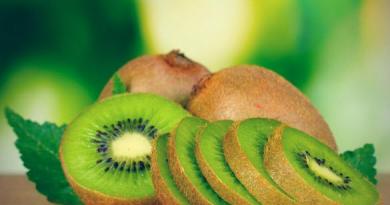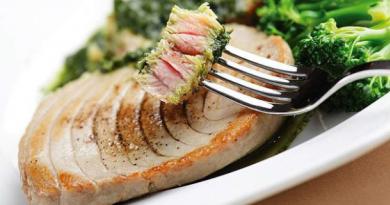- numerous "mushroom guard", which got its name because it grows, as it were, in rows. Often, mushrooms, "built" in a row, are located so close to each other that the cap of one mushroom partially or completely covers the cap of another.
These rows are nothing more than segments of mycelium, growing in a big circle. If you look closely, you will see that the row has a curvature, and if you go further along the imaginary ring, you will surely see another row, followed by the next one, and so on until you find yourself at the starting point.
There are up to 12 species of rows, of which eight are edible.
In August and until mid-October they collect yellow-red, heapy and lilac-footed rows. Let's consider in more detail row types.

In pine forests on stumps and next to them in small groups grows row yellow-red. The hat has diameter 5–15 centimeters irregularly shaped, at first convex, later flat, depressed, dry, wavy, yellow-rusty in color, completely covered with the finest red scales. The stem, as a rule, grows not to the center of the cap, but closer to the edge. Even, smooth, dense, fibrous, lighter than the cap. The plates adhering to the stem are yellow, wide, thick. The pulp is yellow, dense, odorless and tasteless. Mushrooms fried, marinated and salted.
It grows in a young pine forest on bald sandy edges, slightly covered with sparse grass or moss. hat, 5–10 cm in diameter. dense, red-brown or reddish, dry, rough. In young mushrooms, it has a spherical shape, later prostrate, with a tubercle in the middle. The plates are white, later - dirty beige, with brownish spots. The leg is cylindrical, up to three centimeters in diameter, dense, with a membranous ring, above the ring it is white, below it is the color of the cap. The pulp of the fungus is white, dense, turns red on the cut, tasteless, with a slight floury smell.

Row red is used in boiled, fried, pickled and salted.
Row heap
In pine, deciduous and mixed forests on sandy soils, it occurs in large families rowing heap. hat, 4–15 cm in diameter. hemispherical, later - flat-convex, dirty or reddish-brown. The plates are whitish, later brownish, thick, thin.
The leg is fibrous, up to three centimeters in diameter, reddish, turning brown with age. The pulp is white, has a pleasant smell and taste. Row heap is best marinate and salt.
Mushroom lovers living in the steppe treeless regions can collect mushrooms from August to mid-November. lilac-footed row.
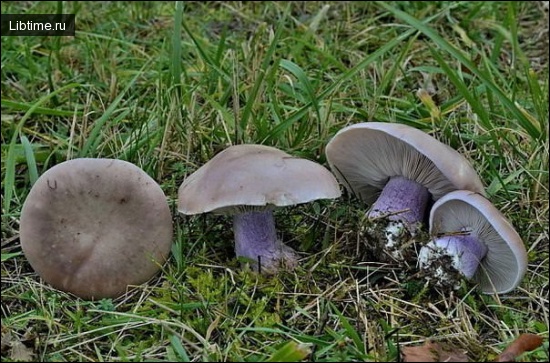
This mushroom grows in the steppe, in small deciduous forests, near rivers and in field plantations,
hat, 7–20 cm in diameter. smooth, thickly fleshy, hemispherical, with age - flat procumbent, yellowish or reddish-gray. The plates are thick, whitish, later - the color of the cap. The leg (up to five centimeters in diameter) is dense, whitish above, purple below. The pulp has a pleasant smell without taste, whitish in color, dense.
The lilac-legged row can be salted, marinated, dried and fried.
Grows profusely in poplar plantations rowing poplar. The fungus is not picky about the place of growth. It is found in the park, in the shelterbelt, along the banks of rivers and even on the islands. If only there were poplars and sandy soil. These mushrooms grow together, at the very trunks of poplars, closely clinging to each other. They are not easy to spot, because they do not show up from under a layer of last year's and freshly fallen leaves.
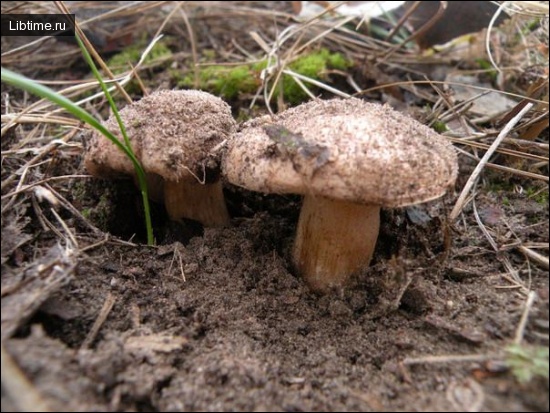
meaty hat, diameter from 10 to 15 centimeters, convex (in young - spherical), later - flat, with a tubercle in the center. Painted reddish-brown, lighter towards the edges. The plates are frequent, wide, white, turning brown with age. The leg is dense, up to ten centimeters high, two to four centimeters in diameter, white, turns red with age. The pulp is whitish, dense, tasteless, with the smell of flour, slowly turns red on the cut.
Before cooking, poplar rowing is necessary thoroughly wash off the sand. To do this, the mushrooms must be placed in a large container filled with cold water (preferably in a bath), placed with plates down and several times “overtake” them from place to place. After that, each mushroom should be washed under running water, cleaning the leg, the surface of the cap and the plate with a brush from the sand. The washed mushrooms salt and pickle. Drying and frying them is not recommended, due to the fact that they become tough and tasteless.
Row green, or greenfinch
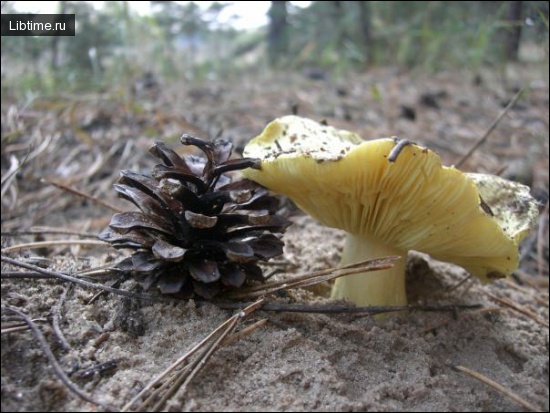
On sandy soils in a pine forest grows in large families row green, or greenfinch. Young greenfinches can be easily detected by well-marked mounds of needles or sand. As the fungus grows, the sand cracks, and a bright yellow-green cap appears on the surface. In young mushrooms, it has a hemispherical shape, then flat, with wavy, sometimes cracked edges. Diameter from four to nine centimeters. The color is green-yellow, in the middle - olive-brown. The plates are wide, sparse, lemon-yellow, greenish, lighter than the cap, weakly attached to the stem. The leg is the color of plates, in young mushrooms it is conical, then cylindrical, hard, fibrous, rough to the touch, sits deep in the sand. The pulp is white, slightly yellowish, dense, tasteless, with the smell of flour. The cap comes off easily from the stem.
Young greenfinches have sticky hats and sand sticks to them, which is not easy to remove. It also sticks to the legs, stuffed into plates. Mushrooms should be cleaned of sand by soaking and washing with a brush.
Greenfinch is good fried and boiled, delicious salted and marinated. When preparing dishes from greenfinches, it should be borne in mind that their legs are much tougher than hats. You can put up with this when salting, but it is better to pickle, fry and cook only hats.
In places where greenfinch grows, often mixed with it grows in large fruitful rings rowing gray.
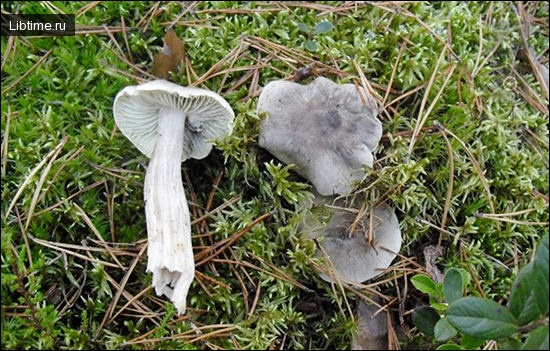
Her hat is ash-gray, darkish in the center, with radial light rays, three to nine centimeters in diameter. In young mushrooms, it is hemispherical in shape, then almost flat, often with cracked edges. The plates are wide, sparse, white, grayish-yellow with age. The stem of the fungus is cylindrical, often curved, dense, slightly yellowish or white, almost all of it is underground. The pulp is white, friable, with a pleasant taste and a slight floury smell.
The gray row is very similar in shape to greenfinch and differs from the latter in color and density. Like greenfinch, the row must be thoroughly washed from sand.
Ryadovka gray is a delicious mushroom. Her fried, boiled, salted and marinated.
All named rows with poisonous mushrooms have no resemblance.


